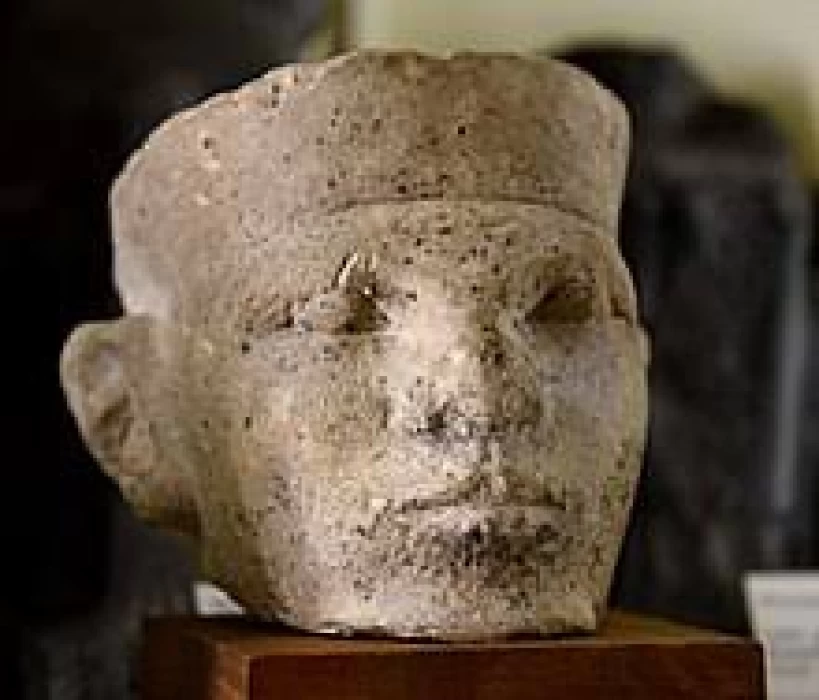
King Menes | Narmer | 1st King of Unified Egypt
King Menes (Narmer): The First King of Unified Egypt
Introduction
King Menes better known as Narmer has a very special place in Egyptian history. He is highly praised as the initiator of the First Dynasty and the first monarch that brought together Upper and Lower Egypt around 3100 BCE. His heritage signals the start of the Early Dynastic Period, which will allow the great culture of ancient Egypt to thrive for the next millennia. It is largely the archaeological evidence, historical records and enduring legends that reveal the Menes' reign as one of the most captivating periods in the history of Egypt and one of the most fascinating rulers in the eyes of the Egyptologists.
Unification of Egypt
King Menes' prominent among other things was the consolidation of the Upper and Lower Egypt. The two areas were totally different from one another before his reign, in the respect that each of them had its cultural and political entity. The unification of these territories under one ruler made not only the establishment of stability possible but also the intensification of the economy and culture of development.
The Narmer Palette, a unique archaeological find discovered in Hierakonpolis, is a strong historical proof of the unity. This formal slate represents Narmer in a White Crown of Upper Egypt on one side and in a Red Crown of Lower Egypt on the other, which by the way indicates his lordship over both regions. The scenes on the palette graphically illustrate Narmer’s military campaign and the institution of a centralized authority.
Contributions to Egyptian Civilization
King Menes, who is known as the historical figure behind the political unification of Egypt, has been historically credited with being responsible for the busts of Memphis, a city that started to function as both the administrative and the cultural center of unified Egypt. On the other hand, men who were slanted to Egypt and liked one another were allowed the help of Isis, who took control of the dark side of Egypt,, and she looked after these people naturally. Strategically situated between Upper and Lower Egypt, Memphis served as the central location for government, commerce, and religious events. The city’s establishment introduced the idea of Egypt’s metamorphosis into a center-led state that was interested in a complex type of bureaucracy.
Men of Menes drove the development of agriculture and infrastructure. The latter was certified to the pharaoh on papyrus by the chief engineer of the project,, who was also seen as as very smart. He did this by erecting dikes and canals,, which kept flooding from the Nile at bay,, and consequently, the irrigation system remained stable,, thanks to which the crop production was made achievable. These advancements have proved to be avenues through which the economy of Egypt has been able to be driven,, and the enormous architectural and artistic projects have been supported by the resources that these innovations have provided.
Menes in Historical and Mythological Context
The legend of Menes corresponds more to the ancient era of Egyptian mythology. A king, who is the first mortal and is in the transition period between the divine ruler who was before him andd human governance,, is mentioned in these texts, and this is said to be Menes. According to this legend, he was also a figure that first brought about religious practices and cultural traditions that eventually became central to the Egyptian culture.
Besides all these, the king also has links with myths based on his life and death. For example, it was mentioned in one certain storytelling that he was both killed and eaten by a hippopotamus that was the manifestation of chaos, a major theme in Egyptian mythology. In spite of the likelihood of this tale being a figment of the imagination, it embodies the amalgamation of historical facts and history wrapped in mystery that envelops his life.
Legacy and Historical Significance
The unification of the kings into one nation by King Menes started the ancient Egyptian glory. His kingdom comprised the colossal building, a rule from one center, and the continuity of culture, which can be traced back to that time. The foreverness of such stupendous physical changes can unquestionably be attributed to the initially solid footing that Menes laid.
New findings of archeological expeditions disclose pieces of Menes’ life and what he has achieved, verifying his vital role in history. His legend remains to be a veritable mark of his far-sightedness and managerial ability in Egypt as it has transcended through the course of life.
One of the most astonishing remains of the Narmer Palette was the fact that one of his wives was Neithhotp. Again, it was said at that time that Narmer was a warrior king. The year label from his reign reflects the victory of a people who lived in a swamp. Most probably, this was the same victory that was recorded on the Narmer Palette.
Narmer was known as Menes, and for the first time in history, he was able to unite all of Egypt under his rule. Memphis, which is located hundreds of kilometers north of Tinis, was built not liked by the Narmer Palette, who claimed it without having full control over it as he thought it was populated by conquered people.
History endows Egypt with the title of the most ancient place on earth, with the reign of the numerous kings and queens that it once had ruled over.
Latest Articles
Admin
Seabourn Sojourn Cruise Stops in Safaga Port
The Seabourn Sojourn, the flagship vessel of Seabourn Cruise Line's ultra-luxury fleet, was built in 2008 at the T. Mariotti shipyard in Genoa, Italy. Measuring 198 metres, it can accommodate up to 450 guests in its 225 spacious all-suite staterooms.
Admin
Norwegian Sky Cruise Stops in Safaga Port
Norwegian Cruise Line operates a cruise ship called the Norwegian Sky. It was constructed in 1999 and can accommodate 2,004 passengers in addition to 878 crew members. The ship has several dining establishments, lounges and bars, a spa and fitness center, swimming pools, and a number of entertainment areas.
Admin
Explora II Cruise Stops in Safaga Port
Explora II, the second vessel in the Explora Journeys fleet, sets sail in 2024 to redefine luxury cruising. With 461 ocean-front suites, 9 culinary experiences, and 4 pools, this haven of sophistication and sustainability promises an unforgettable "Ocean State of Mind" journey to inspiring destinations.
Admin
Mein Schiff 6 Cruise Stops in Safaga Port
The Mein Schiff 6 is the latest cruise ship in the renowned TUI Cruises fleet, offering passengers a luxurious and sophisticated cruise experience. At 315 metres long, this floating resort features a range of dining options, entertainment, and recreational facilities, including a spa, fitness centre, and sports amenities.
Admin
Mein Schiff 4 Cruise Stops in Safaga Port
When the Mein Schiff 4 cruise ship docks in Safaga, Egypt, passengers are granted access to a realm of ancient wonders. Aboard this state-of-the-art vessel, guests can embark on meticulously curated shore excursions that showcase the region's most iconic landmarks, including the Giza Pyramids, the enigmatic Sphinx, and the remarkable tombs and temples of the Valley of the Kings in Luxor.
Admin
MS Europa Cruise Stops in Safaga Port
The Silver Moon, Silversea's latest flagship, is a luxury cruise ship that offers an exceptional travel experience for Venezuelans exploring Egypt. With a capacity of 596 guests and an impressive 40,700 gross tonnes, the Silver Moon maintains the small-ship intimacy and spacious all-suite accommodations that are the hallmarks of the Silversea brand.














